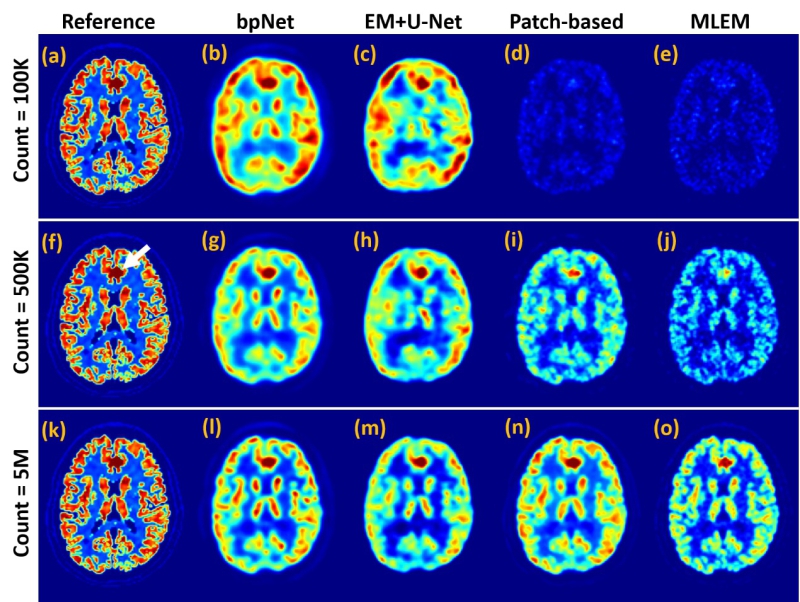
Positron emission tomography (PET) imaging is a noninvasive technique that makes it possible to probe biological metabolic processes in vivo. It detects gamma photons emitted by radionuclides in the organs or tissues, and then visually represents their metabolic activity.
Many image reconstruction methods have been proposed over the past few years to improve diagnostic performance. However, most of these methods can compromise the reconstruction of important high-frequency structural details after aggressive denoising.
Researchers from the Shenzhen Institutes of Advanced Technology (SIAT) of the Chinese Academy of Sciences developed a novel deep learning method that reconstructs PET images using a cascading back-projection neural network (bpNet). The study was published in IEEE Journal of Selected Topics in Signal Processing on May 29.
This network consists of a domain translation operation, which acts as prior knowledge, cascaded with a modified encoder-decoder network.
Based on the embedded domain transformation operations, when the imaging geometry changed, the network simply needed to input new geometric parameters, no retraining was required. The image reconstruction pipeline ranged from the sinogram to the back-projection image and then to the PET image.
The results demonstrated that bpNet provided favorable reconstructed image quality, especially for low-count PET image reconstruction. For the next step, the team will evaluate the application of this method in clinical PET data.


Fig. 2 Comparison of reconstruction results (Image by SIAT)

86-10-68597521 (day)
86-10-68597289 (night)

52 Sanlihe Rd., Xicheng District,
Beijing, China (100864)

